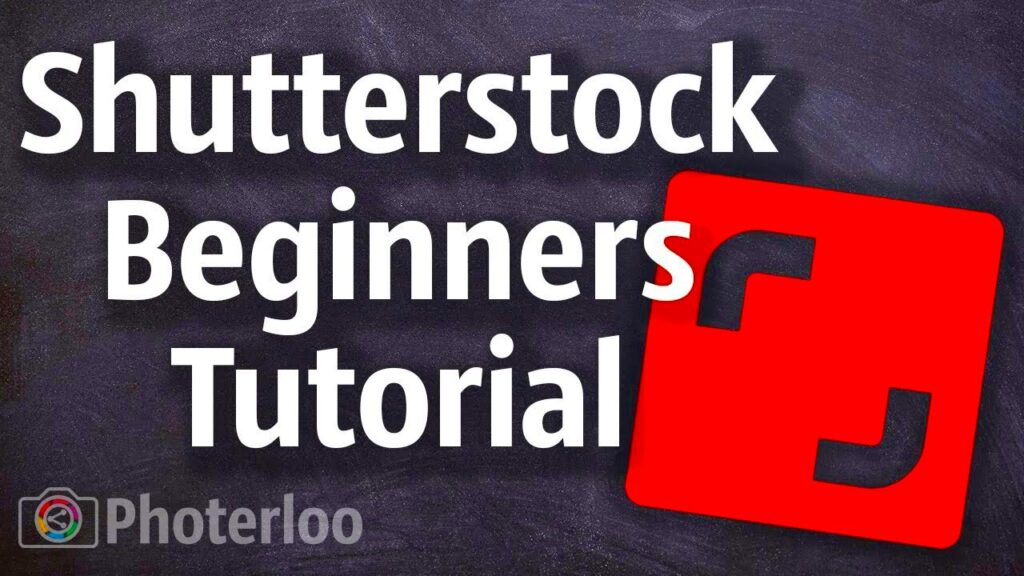The Shutterstock Contributor Program is a fantastic opportunity for creators to earn money from their photos, videos, and illustrations. If you love creating visual content and want to share it with a wider audience, this program is for you. As a contributor, you can showcase your work to millions of potential buyers around the world while earning royalties each time your content is downloaded. Whether you're a professional photographer or an enthusiastic hobbyist, this program opens the door to many possibilities in the stock content marketplace.
Understanding the Contributor Roles

In the Shutterstock Contributor Program, there are various roles you can take on based on your skills and interests. Here are the main types of contributors:
- Photographers: Capture high-quality images for various subjects and themes.
- Videographers: Create compelling videos that tell a story or showcase specific concepts.
- Illustrators: Design graphics, logos, and other visual content that can be used in various projects.
- Editors: Curate and enhance submitted content to ensure it meets quality standards.
Each role has its unique set of requirements and skills. It’s essential to choose a role that aligns with your expertise and interests to maximize your success in the program.
Also Read This: Foap Coins: Your Ticket to Exclusive Content and Features
How to Sign Up for the Contributor Program
Joining the Shutterstock Contributor Program is a straightforward process. Follow these steps to get started:
- Visit the Shutterstock Contributor Page: Go to the official Shutterstock Contributor page.
- Create an Account: Click on the "Join" button and fill in the necessary details to create your account.
- Verify Your Email: Check your inbox for a verification email and follow the instructions to confirm your account.
- Submit Your Portfolio: Upload samples of your work to showcase your style and quality.
- Read the Guidelines: Familiarize yourself with Shutterstock's guidelines to understand what content is acceptable.
- Start Uploading: Once approved, you can start submitting your content for review and earn royalties.
Remember to keep your profile updated and continuously add new content to increase your visibility and potential earnings.
Also Read This: How to Properly Credit Storyblocks When Using Their Content in Your Work
Guidelines for Uploading Content
When you start uploading content to the Shutterstock Contributor Program, it’s essential to follow specific guidelines to ensure your work is accepted and stands out. Here are some key points to consider:
- Image Quality: Ensure your images are sharp, well-lit, and of high resolution. Shutterstock prefers images of at least 4MP.
- Relevance: Your content should align with current trends and be useful for potential buyers. Think about what businesses and creators might need.
- Metadata: Provide detailed metadata, including titles, descriptions, and keywords. This helps customers find your work easily.
- Model Releases: If your images include recognizable people, obtain model releases to ensure you have the right to sell those images.
- Property Releases: Similar to model releases, if your work features recognizable private property, obtain property releases.
Following these guidelines will enhance your chances of getting your content approved. Regularly checking for updates on Shutterstock’s requirements can also help keep you informed.
Also Read This: How to Wear Dupatta on Head in Different Styles
Getting Paid as a Contributor
Once you’ve uploaded your content and it starts selling, it’s crucial to understand how you’ll get paid. Here’s how the payment process works:
- Royalty Structure: Contributors earn a percentage of the sale price when their content is downloaded. This percentage can range from 15% to 40%, depending on your sales volume.
- Payment Threshold: You need to reach a minimum payout threshold before you receive your earnings. This is usually set at $35.
- Payment Methods: Shutterstock offers various payment options, including PayPal, Skrill, and bank transfers. Choose the method that works best for you.
- Tracking Earnings: Use the Contributor Dashboard to track your sales and earnings. This feature provides insights into which content is performing well.
Keeping track of your earnings and understanding the payment process can help you manage your finances better and make informed decisions about your content strategy.
Also Read This: How to Take a Headshot for LinkedIn at Home
Tips for Success in the Program
Succeeding in the Shutterstock Contributor Program requires a mix of creativity, strategy, and persistence. Here are some tips to help you thrive:
- Focus on Quality: Always prioritize quality over quantity. High-quality images will attract more buyers and lead to repeat downloads.
- Stay Current: Keep an eye on industry trends and popular subjects. Creating content that reflects current events or popular themes can increase your chances of sales.
- Diversify Your Portfolio: Upload a variety of content types, including images, videos, and illustrations. This diversity can attract a broader audience.
- Engage with the Community: Participate in forums and groups for contributors. Networking with other creatives can provide valuable insights and inspiration.
- Optimize Your Metadata: Spend time crafting strong titles, descriptions, and keywords. The better your metadata, the easier it is for customers to find your work.
By applying these tips and continually refining your skills, you can increase your chances of success in the Shutterstock Contributor Program. Remember, consistency is key!
Also Read This: Can You Make Money on LinkedIn Tips and Strategies for Earning Income Through LinkedIn
Common Challenges Contributors Face
While the Shutterstock Contributor Program offers great opportunities, it’s not without its challenges. Many contributors encounter issues that can affect their success. Here are some common hurdles:
- Content Rejections: It’s common for submissions to be rejected. This can be frustrating, especially if you’ve put in a lot of effort. Ensure you understand Shutterstock’s guidelines to minimize rejections.
- Understanding Trends: The market is constantly changing, and it can be tough to keep up with what buyers want. Regularly researching trends can help you stay relevant.
- Building Visibility: With so many contributors on the platform, getting your content noticed can be difficult. Focus on high-quality submissions and effective metadata to increase your chances.
- Managing Earnings: It can be tricky to predict your earnings, especially in the beginning. Many contributors experience fluctuations in sales, so it’s important to be patient and consistent.
- Time Management: Balancing creating content with other responsibilities can be challenging. Set aside dedicated time for photography, editing, and uploading to stay on track.
Recognizing these challenges can help you prepare and navigate the contributor journey more effectively. Remember, persistence is key!
Also Read This: Design Custom Buttons Using Canva Button Template
Frequently Asked Questions
Here are some common questions that new contributors often ask:
| Question | Answer |
|---|---|
| How long does it take to get approved? | Typically, it takes a few days for your account and content to be reviewed and approved. |
| Can I upload content that has been rejected? | You can revise and resubmit rejected content if you address the reasons for rejection. |
| Do I need to pay to join the program? | No, joining the Shutterstock Contributor Program is completely free. |
| How often are payouts made? | Payouts are usually processed once you reach the minimum payout threshold. |
| Can I use my Shutterstock content elsewhere? | Content uploaded to Shutterstock cannot be used for sale on other stock sites. However, you can use it for personal projects. |
If you have other questions, don’t hesitate to check Shutterstock’s help center or reach out to their support team.
Conclusion
Getting involved in the Shutterstock Contributor Program can be a rewarding experience for creatives who are willing to invest time and effort. By understanding the guidelines, staying informed about trends, and continuously improving your content, you can find success in this dynamic marketplace. Remember to stay patient and persistent, as building a successful portfolio takes time. With dedication and a clear strategy, you can turn your passion for creating visual content into a profitable venture. Happy contributing!
